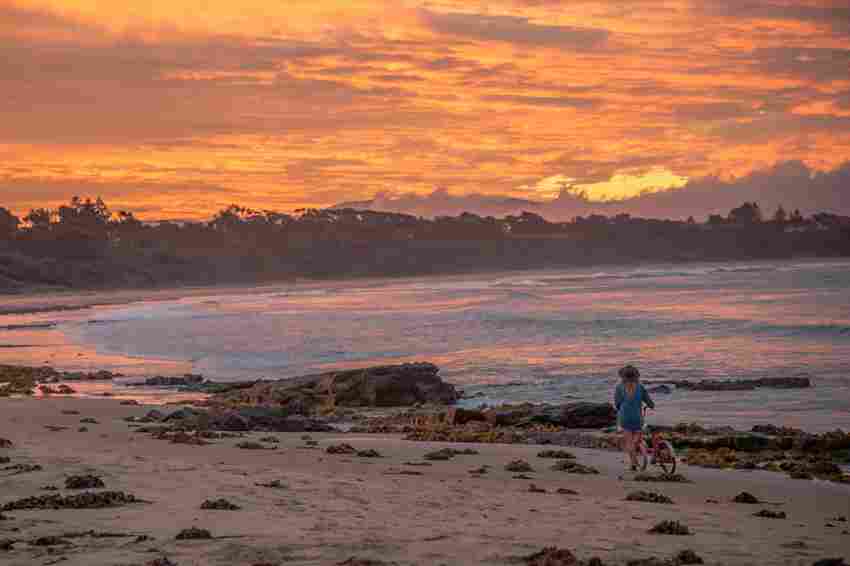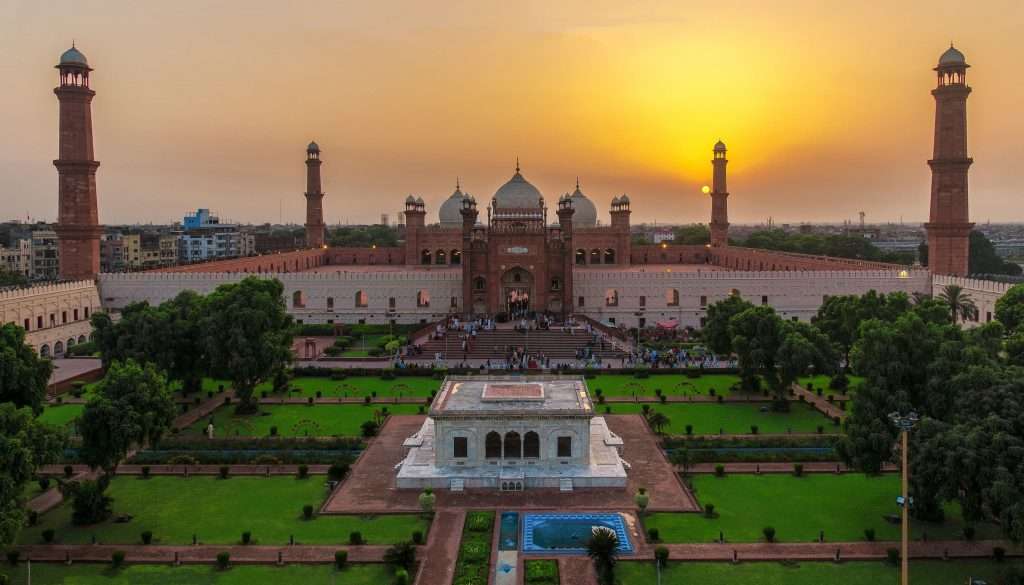What are 3 unique things about Australia? Australia, a captivating continent-country nestled in the southern hemisphere, boasts a trio of unparalleled attributes that set it apart on the global stage. From its awe-inspiring biodiversity to its rich indigenous culture and diverse landscapes, Australia offers a distinctive blend of natural wonders, ancient traditions, and geographical marvels that make it truly one-of-a-kind. In this exploration, we delve into three remarkable aspects that define the uniqueness of Australia.
1. Breathtaking Biodiversity
Australia’s unique natural landscapes host diverse flora and fauna, some exclusive to the continent due to its isolation. The Great Barrier Reef mesmerizes with vibrant marine life and stunning coral formations. The outback presents a desert expanse inhabited by kangaroos, wallabies, and the enigmatic emu. The platypus, a symbol of Australia, showcases its distinctive evolution with its duck-like bill and webbed feet.
2. Indigenous Culture and Heritage
Australia’s rich indigenous heritage is a unique facet that sets it apart. For over 65,000 years, Aboriginal and Torres Strait Islander peoples have inhabited this land, boasting among the world’s oldest surviving civilizations. Their profound bond with the land yields a distinctive worldview encompassing art, spirituality, and society. Dreamtime stories, integral to their culture, explain the world’s origins and endure through captivating art, reflecting the spiritual link between humans, land, and animals. The boomerang, both a tool and cultural emblem, globally represents Australia’s indigenous legacy. These communities demonstrate reverence for natural resources and have practiced sustainability for millennia, offering a profound lesson in environmental harmony.
3. Distinctive Landscapes and Geographic Marvels
Australia’s topography is a tapestry of diverse landscapes, from the splendor of the coast to the untamed interior. Its singularity on a worldwide scale is largely attributed to the vast diversity of its landforms. Uluru, commonly known as Ayers Rock, is a large sandstone monolith that stands towering in the middle of the nation and is one of its most impressive features. Its commanding presence and constantly shifting colors are evidence of the strength of geological processes and the magnificence of nature.
The Pinnacles, located in Western Australia’s Nambung National Park, is another geographic wonder. These eerie limestone formations, resembling a surreal alien landscape, create a spellbinding scene that ignites the imagination. The dramatic coastline along the Great Ocean Road showcases the Twelve Apostles, towering limestone stacks that emerge from the Southern Ocean, sculpted by centuries of erosion. 3 unique things about Australia

Famous things about Australia
The Sydney Opera House:
The Sydney Opera House: Australian icon, art masterpiece, harbor landmark. Its distinctive sails host performances, drawing millions to Sydney’s coast.
The Great Barrier Reef:
The Great Barrier Reef is a vast marine environment that stretches along the Queensland coast and is one of the natural wonders of the world. Divers and nature lovers travel from all over the world to see its brilliant coral formations and teeming marine life, which provide an unparalleled underwater experience.
Uluru (Ayers Rock)
iconic sandstone monolith, central Australia. Anangu holds cultural reverence. A spiritual and geological wonder, mesmerizing color shifts at sunrise and dusk.
Kangaroos and Koalas:
Australia is a continent-country teeming with extraordinary wildlife, and two of its most iconic creatures are the kangaroo and the koala. These marsupials have become beloved symbols of the country, capturing the hearts of both locals and international visitors alike. Let’s delve into the fascinating details of these unique animals:
Kangaroos: The Hoppers of the Outback
The most 3 unique thingsrecognizable and iconic animals in Australia are kangaroos, which stand for the size and variety of the continent’s landscapes. They are marsupials, which means they give birth to offspring who are comparatively underdeveloped and carry them in a pouch. They are members of the family Macropodidae, which means “large foot.”

Physical Characteristics
Kangaroos are characterized by their powerful hind legs, long muscular tails, and distinctive large, padded feet. They have small front limbs, which they use for balance and grooming. Their tails play a crucial role in maintaining balance while hopping at high speeds.
Adaptations:
The kangaroo’s specialized form of movement called “hopping,” is an amazing adaption to the dry and frequently difficult Australian outback. They can bound across great distances at astonishing speeds, up to 40 miles per hour, thanks to their strong hind legs. They can travel vast distances with little energy expended thanks to this energy-efficient kind of mobility, which is essential for surviving in harsh, desert settings.
Species Diversity:
Australia is home to several kangaroo species, including the Red Kangaroo, Eastern Grey Kangaroo, Western Grey Kangaroo, and Agile Wallaby, among others. The Red Kangaroo, in particular, is the largest marsupial in the world and can stand over six feet tall.
Cultural Significance:
For the indigenous Aboriginal and Torres Strait Islander peoples, kangaroos have held deep cultural significance for thousands of years. They feature prominently in Dreamtime stories, art, and ceremonies, serving as symbols of strength, survival, and adaptation.
Koalas: Eucalyptus-loving Tree Dwellers
Koalas are charming and it has 3 unique australia marsupials who live in trees and are well-known for their calm demeanor and love of eucalyptus leaves. Although they are not bears at all, they are frequently called “koala bears” and have come to represent the distinctive biodiversity of Australia.
Physical Characteristics:
Koalas have a distinctive appearance with round faces, large furry ears, and a broad, flat nose. Their soft, dense fur varies in color from gray to brown, providing insulation and protection from the elements. They have sharp claws and opposable thumbs, which enable them to grip and climb trees with ease.
Diet and Adaptations:
Koalas are highly specialized herbivores, feeding almost exclusively on eucalyptus leaves. The leaves are toxic to most animals, but koalas have developed a unique digestive system that allows them to break down toxins and extract nutrients from this fibrous, low-nutrition diet.
Tourist Attractions:
Seeing koalas while visiting Australia is a treasured experience. Numerous zoos and wildlife sanctuaries provide an opportunity to see and even pet these gentle animals while following stringent regulations to protect their welfare.
In addition to being intriguing creatures, kangaroos and koalas are essential parts of Australia’s natural history. They serve as essential emblems of the continent’s diverse and abundant fauna because of their special adaptations and specific roles in the ecosystem. These famous marsupials will always be a crucial component of Australia’s identity and its appeal to the rest of the globe as the nation continues to appreciate and protect its amazing biodiversity.
Conclusion
Australia’s uniqueness is an amalgamation of remarkable biodiversity, indigenous culture, and diverse landscapes. This vast continent is a testament to evolution’s wonders, the resilience of ancient cultures, and the awe-inspiring forces of nature. From iconic marsupials to intricate Dreamtime stories, Australia captivates the world with distinctive charm. As we explore its depths, we gain not only a deeper understanding of this land but also a greater appreciation for our planet’s boundless beauty and diversity.
Intriguing, captivating, and unforgettable – Australia’s experience transcends the ordinary, leaving an indelible mark on explorers. Whether drawn by vibrant coral reefs, rhythmic indigenous dances, or mystical rock formations, Down Under promises an adventure like no other.



